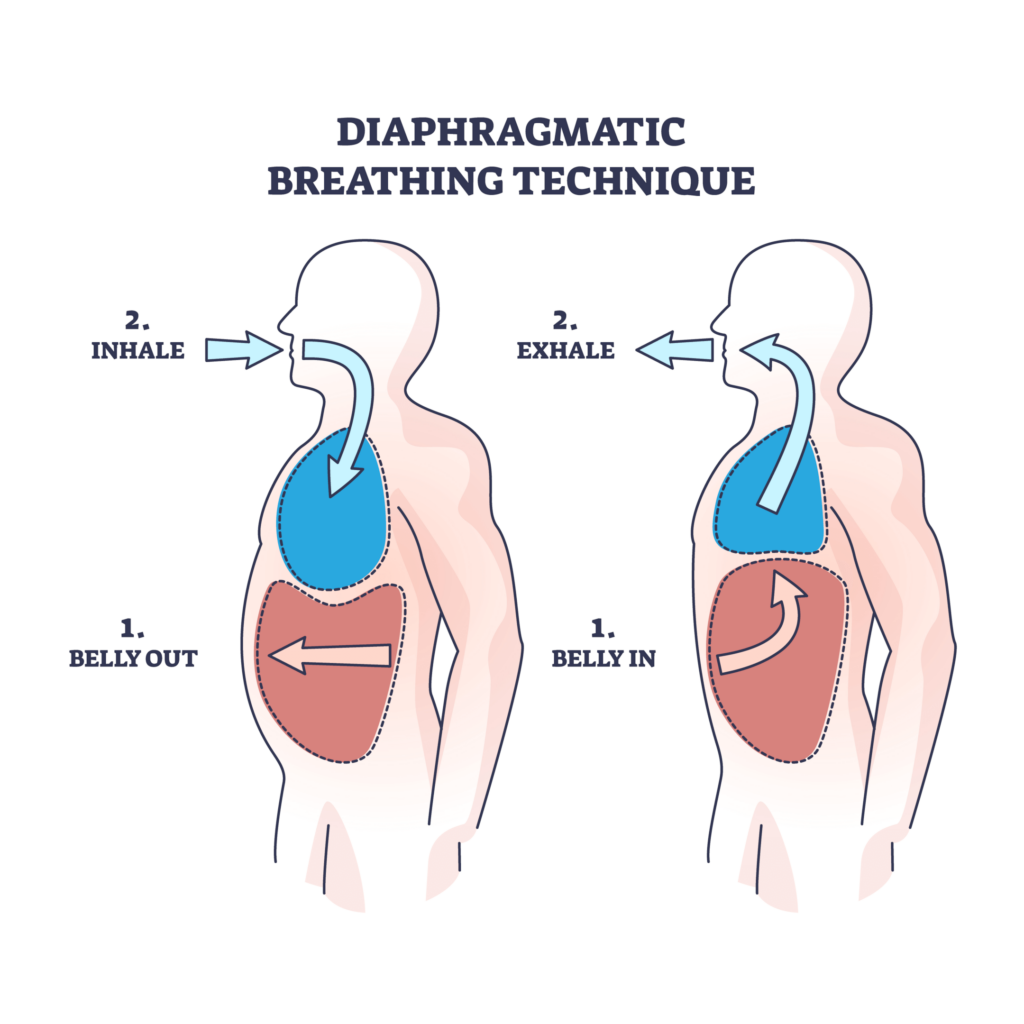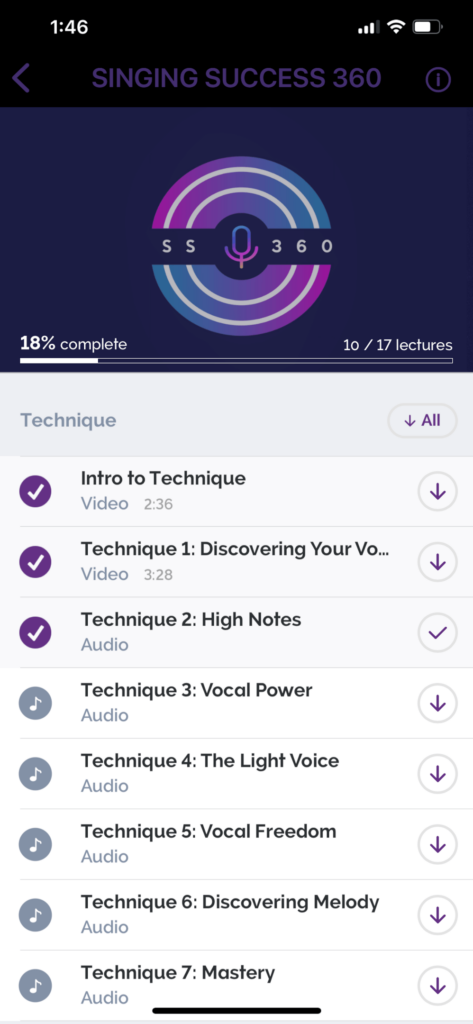Singing without instruments is called singing “a cappella,” and it’s an important skill to learn. “Why?” you ask. Good question.
Aside from knowing and being able to participate in the many styles of vocal music that are typically a cappella (barber shop, choral, and so on), it’s one of the singing skills you should acquire to fully understand your singing voice, whether you’re in a group or a practice room.
Movie stars make it look easy, but there’s a lot of work and practice that goes into becoming proficient at a cappella singing. It also requires a great ear and the ability to collaborate with others without the aid of backup instruments. Enlisting the help of your voice teacher is a great way to get into that mode of singing practice. Besides it just being fun, there are many benefits of singing a cappella.

A cappella singing teaches you how to be self-sufficient. If you’re always waiting on the instrument to give you your pitch, you will find yourself ill-prepared in the music world. Sometimes, you have entrances without an introductory pitch. You will need your vocal cords to have the ability to memorize pitches and rely on muscle memory.
Practicing a cappella is a great way to expose poor technique or dial in on learning new voice sounds. The human voice is an amazing instrument, capable of so much more than many people know. The skills and knowledge that you can acquire from practicing without instruments will help shape you into a great singer.
Advanced singers are comfortable singing with their bare voice. Although, you may need to find the right pitch with a keyboard app on your phone, (back in the day, people used a pitch pipe to start) because perfect pitch is extremely rare and difficult—but possible—to develop.
Once you have your first note, finding the right notes is 10X easier because melodic patterns begin to lock in.
*Most of the greatest singers I’ve worked with do NOT have perfect pitch.
Understanding Vocal Warm Ups
If you’ve ever had voice lessons, you know how much emphasis a good teacher will put on warmups. They are essential exercises for singers who wish to enhance their vocal performance, reduce the effort required to perform, and keep their voices healthy.
Know Your Why
Developmental warm-ups accomplish several tasks:
Warmup, stretch and coordinate the vocal cords. Not every item in this list is done every time you warm up. This is why I created Singing Success to take the guess work out of warm-ups and the vocal training process. Extend your vocal range, build overall power in your voice. Assure that the air flow and vocal cords are working together instead of in opposition to each other. Learn and memorize licks, trills and runs. Using major, minor and pentatonic scales to refine your ear and your vocal cord coordination.
Even though warm ups do not require a piano or keyboard, I think the initial phase of vocalizing (singing scales and doing vocal exercises) should have precise piano scales to match up with your voice. Remember this… a good singer will treat the voice like pro athletes treat their bodies. And…always warm up and practice singing to your heart’s desire, for the heart will tell on you….whether you are serious enough to practice daily.
Pre-performance vocal warm-ups are meant to do four things for a singer: prepare the breath, warm up the whole body, extend your speaking voice into the range of a singing voice, and refresh the material that is going to be performed.
More Than Just Scales
Most of those probably make sense to you, but… a whole-body warm-up? Muscles all over the body are used when you sing, not just those in your throat and diaphragm. Stretching all your muscles out and warming them up helps to prepare the body for proper posture and balance, facial expression, articulation, and breathing. Stretching out the shoulders, back, neck, and abdomen is important to reduce tension that builds up in the muscles over the course of a typical day. This tension comes through in your singing when it’s not dispelled, which causes a strained sound in your performance. It’s not pleasant to hear, nor is it pleasant to try and work around while singing.
Furthermore, warming up your whole body improves circulation. Sluggish circulation, equals stubborn vocal cords and a singer with low energy. Also, all the vocal cords are tiny, so warming up other muscles—doing almost any kind of aerobic exercise or calisthenics—will engage large muscle groups and speed up warm up time.

What Are Your Vocal Cords?
Vocal cords (also known as “vocal folds”) are the two muscular bands inside your voice box that produce your voice. If you’re not careful, you can damage your vocal cords relatively easily.
Spending too much time at the extreme of your vocal cords limits (either yelling or whispering) is a quick way to cause damage. In fact, ‘some’ interpretations of belt singing have led to severe damage to the vocal folds. I’ve done 1000’s of hours of vocal therapy with various singers who’ve fallen victim to the methodology of singing as “yelling on pitch”. This is simply horrible.
You more commonly hear medical providers refer to the vocal cords by their alternative name, vocal folds. This is because people once thought that the vocal cords were similar to two strings of a musical instrument, vibrating when moved. We now know that your cords actually consist of multiple folds that aren’t isolated structures, but instead, connect to quite a bit of muscles and cartilage within your voice box or larynx. It’s just a different reference to the structure, but the two terms mean the same thing.
How your vocal folds work is, they come together when you’re speaking, humming, singing, moaning, whispering, growling – any kind of vocalizing. When they touch, the vocal cords retain the air coming from your lungs, up through your trachea or ‘windpipe’. The trapped air puts pressure on your vocal cords and the tension causes your vocal cords to vibrate as air passes through. The combination of air and vibration is where your sound comes from. Structures in your mouth such as the soft palate, teeth, tongue, and sinuses, all work together to fine-tune the sound that escapes. Thank goodness, otherwise, we wouldn’t be able to sing at all!
In fact, let me just pause to say that the voice is a miracle. And Diva, Divo, or ‘master’ singers are transcendent miracles.
Depending on how high or low the pitch of your voice is, your vocal cords may vibrate hundreds of times per second even though they aren’t very big. Vocal cords at birth are only 6 to 8 millimeters long. As you grow, of course, they grow with you, but they’re never very big. The length and thickness of your vocal cords is mostly what determines the pitch of your voice. Thicker cords produce a more powerful sound and thinner ones produce a smaller voice. Shorter cords, produce high pitch tones. Longer cords produce lower notes.
Knowing this fact of your voice type (which is something a qualified vocal coach can help with) is a large part of effective singing practices.
Your vocal cords work hard for being so small, so be sure to care for them properly by resting your voice occasionally and using proper technique when you sing.

Tips for Practicing Singing Quietly
We all love the sound of a song sung with a lot of volume and power, but that’s not what every song calls for. Mixed-belt (catch my blog on re-defining and clarifying belt singing) is a great skill to learn, but it’s not the only one. Singing quietly may sound boring, but, when done correctly, it has several benefits.
Practicing singing quietly helps you correctly balance the use of your exhaled air and your vocal cords allowing you to sing at the same level that you would speak at. This will help you drop old habits that are causing tension and leave you with a stronger, more confident voice.
Singing quietly also allows your vocal cords to develop some strength on their own, rather than forcing too much at once.
Here’s how to do it:
1. Rest in a Standing Position
Before you ever start singing, find your center in an upright position. You want your spine and singing muscles to be in line with one another.
Contrary to popular belief, you DON’T always need to stand when you sing. If you play piano, drums or any instrument that typically requires sitting, you just have to remember to ‘sit tall’. This doesn’t mean sit rigid. I have trained many piano based singers who sit and sing and deliver the same energetic, exciting and memorable performance as those who stand tall.
2. Release Any Tension
We carry a lot of tension in our bodies. All those things that you worry about or think constantly about are stored in your body. Now is the time to let them go. Start at the top of your head and all the way to your toes, release tension one muscle at a time. Make sure your tongue is off the roof of your mouth, your shoulders are dropped, your hands are relaxed, and your knees aren’t locked.
You can also lay on your back and breath slowly to release excess outer tension. I’ve done this with stressed out students from time to time and it’s improved tone immediately!
All training results are multi-factoral. It’s never just technique.
3. Practice Inhaling and Exhaling
Take a moment and engage your breathing muscles. Keep a tall chest and breathe from your diaphragm. This may be confusing if you’ve not had this explained, but diaphragmatic breathing is simply letting your stomach fall forward as you inhale. This allows your lungs to expand downward, as in the pic below.

4. Sing in a Light and Soft Hum
Keep the pitch easy. Warm up your vocal cords and engage your mind. Do this sound with minimal effort. If it’s difficult, you may have vocal disfunction and need vocal therapy. Don’t panic! My talented coaches and I are fully capable of giving vocal therapy exercises to help assist in your vocal healing.
Be sure that you’re not singing breathy. In the initial warmup phase, you want the clearest, cleanest tone possible.
5. Make a Humming Sound Using: MM, NN, and NG
Keep your voice relaxed. Don’t allow any tension to creep in. You can easily slide up and down your ‘natural’ (not pushed) vocal range. Just realize the MM is the fullest or heaviest sounding hum. NN is second. Sustaining NG is the lightest and activates the pharyngeal (brassy or nasal) resonance.
This is a very safe and freeing way to warm up.
6. Keep Toggling the ‘MM’ and ‘EE’ Sounds
Do this until they sound controlled and you’re not changing pitch when you change sounds. This is a gentle refinement exercise to have control over your voice. If you’re feeling sloppy, then don’t fret. That’s why we vocal coaches exist. Almost no pro singers go without a coach.
7. Practice ‘Semi-Occluded’ Exercises
These are sounds that are typically muffled—like lip trills—as we’ll talk about later on here. But you can get a great list of these in my ground-breaking program titled “Vocal Hacks”!
How to Practice Singing Quietly
Now that you’re properly warmed up and you have engaged your entire body, it’s time to apply all of that to your own singing. Though having a music teacher with a music studio is helpful, that’s not always affordable for everyone. So, here are some ways you can begin singing quietly on your own.
Sing Quiet Songs
Pick out songs that don’t require a lot of your voice. There are many songs out there that are designed to sing quietly, so it’s easier to practice good technique with these choices as opposed to heavy metal. Extremes of your range are hard to reach while singing quietly. You can pick a loud song and bring it down, introducing it to a soft spin, if you like. That can be a fun way to explore your voice’s abilities and different styles while you learn to sing quietly.
Also, when recording cover songs on social media or live, it’s always a pleasant surprise to take a huge song and make it intimate and sung in the lightest dynamic tones. Not only does it show extreme creativity, vocal savvy and control, but it also quiets a noisy audience. I’ve done this live, countless times.
Turn on the TV and/or Fan
Introduce white or pink noise to your practice sessions, but then don’t try to fight it or sing over it. You don’t want to strain your voice by trying to “beat” whatever you turn on, otherwise, you’re defeating the purpose. Most practice sessions aren’t perfectly quiet anyway, so this is a good opportunity to practice circumventing distractions while maintaining proper vocal technique.
Sing in a Light Voice
Light singing does not have anything to do with pitch. It has to do with vocal folds that are more relaxed than typical singing, creating less mass/vertical depth of the vibrations. There’s less resistance on your voice creating a more breathy (or, lighter) tone.
Be warned that light singing isn’t necessarily easy. It doesn’t mean that you get to breathe out all your notes with little attention to detail and call it good. Light singing is a real technique that requires quite a bit of vocal and breath control. Light singing—if done airy—uses a lot of air, which means air flow must stay regulated.
Additionally, unless you’re a strong singer, you may not be able to sing lightly for very long before the throat muscles start constricting.
Airy singing isn’t the same thing as light singing, because I actually use less air to sing quietly. This allows me hold out a note for MUCH longer than airy singing, which can damage your voice if done to the extreme! Below is an example of holding out a light note for about a minute. Give it a try and if you get close to it, post it and tag me and Singing Success and we’ll happily share it. [If the tone is strident and the pitch is off, we are less likely to share it. Don’t be discouraged. Just keep at it.]
Sing in the Pillow
Singing into a pillow can be a good way to force your voice to relax. Once again, don’t strain your voice when you’re practicing in this way. If you need to hear yourself better, cover one of your ears.
Also, I may be trying to be a little funny here, but….. don’t smother yourself!

Humming in Vocal Fry
Humming isn’t only a fantastic warm-up, but it helps you practice the full range of a song at a natural projection or volume. (You can’t hum very loud no matter how hard you try.) On top of practicing breath control and pitch, humming will allow you to work out some tricky passages by adding vocal fry and reducing the air AND tension on the cords. This will build a lot of control over your chosen piece.
The classical legendary teachers used to refer to great singing as ‘humming with your mouth open”. I believe this is because your resonance is maximized, with the least amount of effort.

Conclusion
Maybe your reasons for wanting to sing quietly are a little different. Maybe you live in an apartment building and the neighbors are a little difficult about noise. Maybe you’re trying to surprise someone with a special song and you don’t want to give them any hints.
Ideally, you would pick a place where your practice sessions can be whatever you need them to be. If you need to work out some chest voice problems, great. If you need to ‘stretch’ (a better description is ‘coordinate’… but that’s a deeper conversation) the upper ranges of your head voice, you should have the freedom to do that. We know that not everyone has access to a place that allows for this, but do what you can.
When you’re singing quietly, for whatever reason, do so with proper technique. You want to protect your voice and build good habits from the very start. Every practice session should have a plan and purpose, and be well thought out with the idea of improving, not just becoming more familiar with a piece of music.
We can provide that purpose with our diagnostic, accelerated methods through one-on-one sessions with our coaches.
Or…. if funds are limited, NO WORRIES!!!
You can start today with our online programs. Access them easily and instantly through an App on your phone or computer. Fortunately, my Singing Success 360 program has 17 lessons. Amongst those are 7 technique lessons titled….. “Discovering Light Voice” and as you heard in the example above, I’ve achieved some level of mastery of this intense, emotionally gripping coordination. This could be on your phone… transforming your voice today!!!

Visit us at
www.singingsuccess.com to join our VIP program and get instant access to ALL our main courses, weekly interaction with our coaches and other encouraging members in our online vocal community and… much, much more!
Or book a lesson with one of our gifted coaches by visiting our website, emailing or calling us at:
support@singingsuccess.com
615-866-1099
You are one practice session away from being a better singer!!





